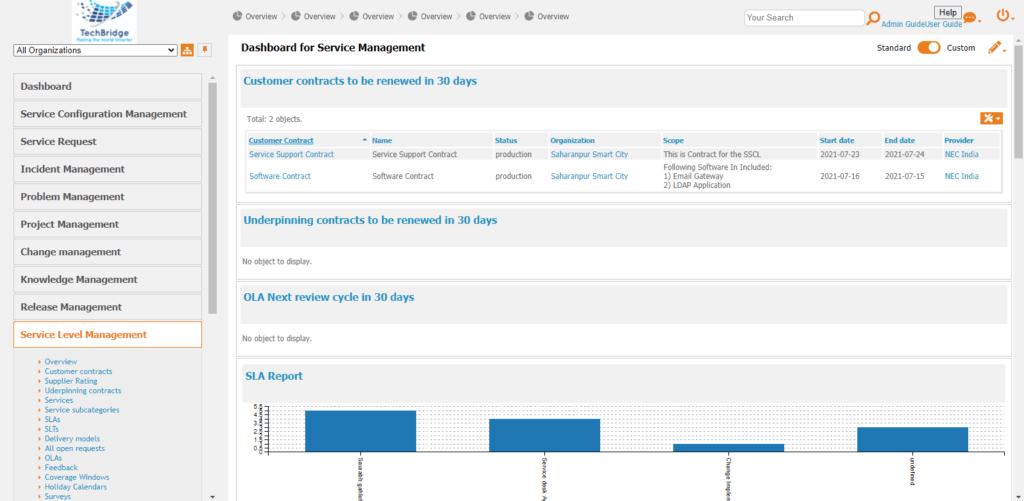Service Level Management

Definition:- The practice of Service Level Management (SLM) gives assurance to the service consumer that a provider will deliver a level of service that meets their needs.
Purpose:- The purpose of the SLM practice is to set clear business-based targets for service performance, so that the delivery of a service can be properly assessed, monitored, and managed against these targets. SLM involves service level activities, including:
- Defining service levels
- Documenting
- Actively managing them
Service Level Agreements (SLAs)
An SLA is defined as a documented agreement between a service provider and a customer that identifies both services required and the expected level of service. SLAs are used to measure the performance of services from the customer’s point of view, and it is important that they are agreed in the wider business context.
Some of the key requirements for successful SLAs include:
- They must be related to a defined ‘service’ in the service catalogue. Individual metrics without a specified service context are unhelpful.
- They should relate to defined outcomes and not simply operational metrics. This can be achieved with balanced bundles of metrics, such as customer satisfaction and key business outcomes.
- They should reflect an ‘agreement’: an engagement and discussion between the service provider and the service consumer. It is important to involve all stakeholders, including partners, sponsors, users, and customers.
- They must be simply written and easy to understand and use for all parties.
Objectives:- The primary objective of Service Level Management process is to negotiate Service Level Agreements (SLA) with the customers and to design services in accordance with the agreed service level targets.
This SLM process is also responsible for monitoring & reporting the present service levels and also ensures that all Operational Level Agreements and Underpinning Contracts are appropriate for achieving the SLA targets.
Key Activities:-
- Determining, negotiating, documenting, and agreeing on requirements for new or changed services.
- Managing and reviewing all services to match SLAs for operational services.
- Monitoring and measuring service performance of all operational services against the SLA targets.
- Review, Report & Identify improvement opportunities for improvement planning & inclusion in the CSI register.
- Collating, measuring and improving customer satisfaction, in cooperation with business relationship management.
- Reviewing, revising, and documenting: Scope of Service, SLAs, OLAs, and underpinning contracts.
- Providing appropriate Management Information to support performance management and signify service achievements.

